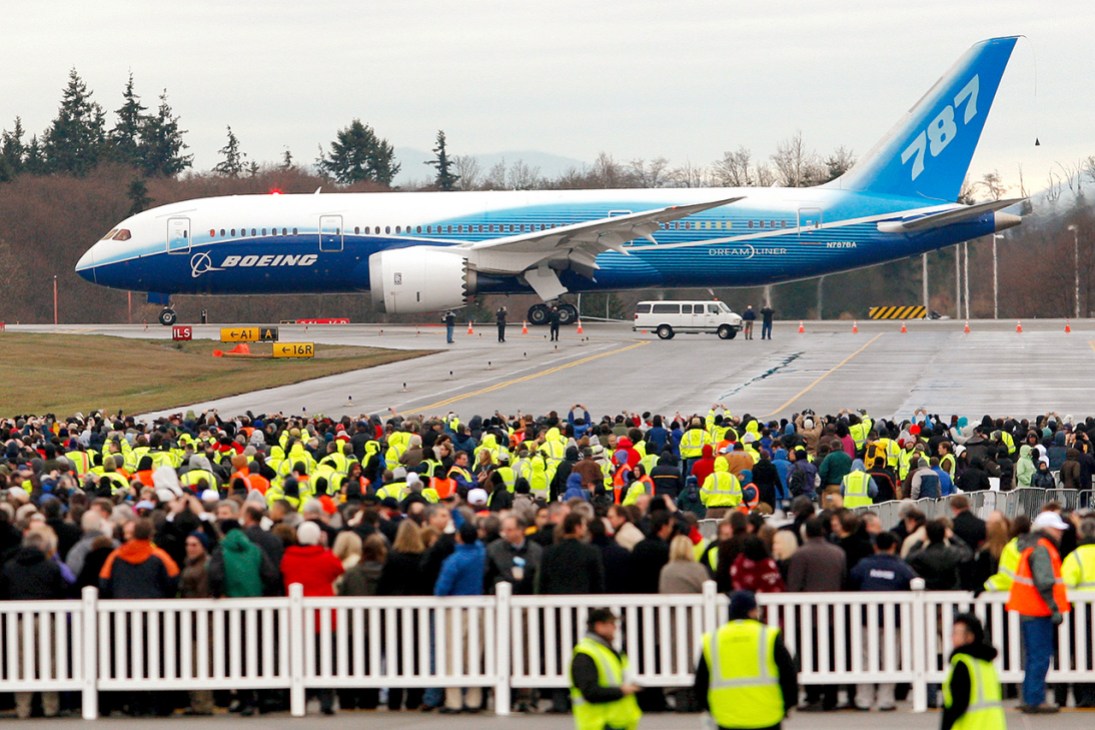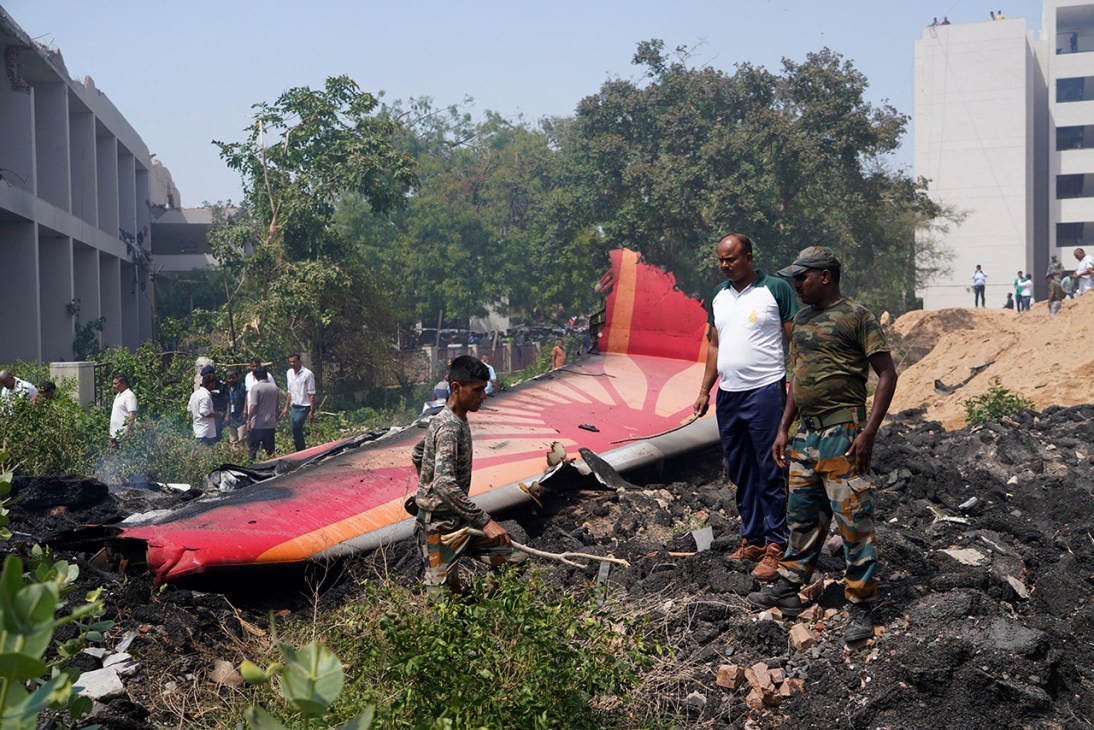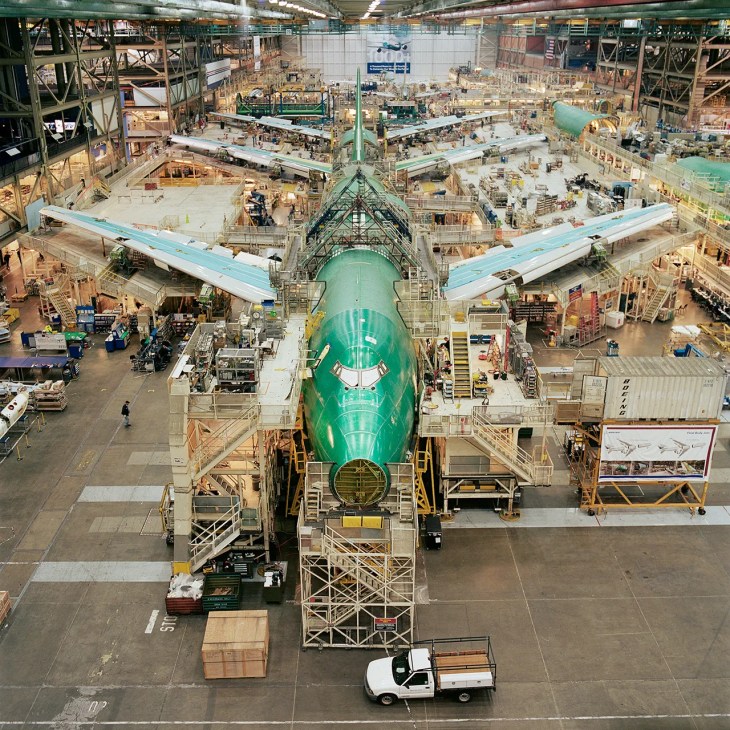Another aviation accident, another three-digit coded Boeing airplane. After years of bad press dogged Boeing’s 737 line, the 787 Dreamliner now faces its first major reputational hit following the fatal crash of Air India Flight 171 on Thursday. While the exact cause of the incident won’t be known for many months, the disaster immediately resuscitated whistleblower complaints about production flaws in the wide-body aircraft – and proved that new CEO Kelly Ortberg’s turnaround efforts at the aerospace behemoth still have a long way to go.
The maiden voyage for Boeing’s 787 Dreamliner took place in 2009 at Paine Field, its flagship manufacturing facility in Everett, Washington. The Dreamliner doesn’t cut as dramatic a profile as the double-decker Airbus A380 and holds fewer passengers than the Boeing 777. But as the name suggests, it provides a smoother ride than its peers for long-haul flights with more comfortable cabin pressure, higher humidity, better air filtration, dimmable windows and anti-turbulence technology.

Like many global carriers, Air India has been stocking up on Dreamliners to replace an ageing fleet of 747s. While the Queen of the Skies is a beloved aircraft, the more fuel efficient Dreamliner is an ideal workhorse for flights between secondary airports, such as Thursday’s route from Ahmedabad to London Gatwick. Just last month, Ortberg joined president Donald Trump and Qatari emir Tamim bin Hamad Al Thani for the signing of a $96bn (€83bn) purchase agreement that includes 130 Dreamliners – the largest order for a single model of jet in Boeing’s history.
The blockbuster deal in Doha papered over lingering concerns about the Dreamliner, concerns that the Air India accident has now propelled to the forefront. The same year as the 787’s inaugural flight, Boeing broke ground on a final assembly line in Charleston, South Carolina, that could handle wide-body aircraft – only the third such facility in the world after Everett, Washington, and Toulouse, France. The move was widely interpreted as a jab at Boeing’s unionised workforce in Washington state, as South Carolina state law prohibits compulsory union membership. The powerful machinists and engineering unions crowed that the lower-cost non-union labour in South Carolina would build inferior airplanes.

Indeed, five years ago, Boeing discovered small gaps in the joins that could weaken the fuselage and production halted for two years to correct the issue. In 2024, whistleblowers testified before a Senate committee that Boeing had taken shortcuts and was “putting out defective airplanes,” an allegation the company denied by pointing to the thorough revamping of how it makes the Dreamliner’s carbon-composite airframe. The Federal Aviation Administration, which in the past has been accused of being asleep at the switch and effectively letting Boeing certify its own aircraft, oversaw the process. Media were also invited into the Charleston plant to see the improvements first-hand.
The Dreamliner that crashed on Thursday, however, was built in Everett by union machinists and delivered in 2014 (before Charleston fully took over wide-body production). Any potential problems with the flagship wide-body jets cannot be reduced to a simple question of union or non-union labour. There are perhaps deeper structural issues facing the inordinately complex engineering of a modern aircraft such as the Dreamliner; it’s also possible that a fluke, such as a flock of birds, caused the crash, as with Jeju Air Flight 2216 in December. Boeing will, of course, dispatch a crack team to assist US and Indian authorities with the crash investigation. In the immediate aftermath, Ortberg has the toughest assignment for any aviation CEO – damage control in the wake of a fatal disaster that has shaken the confidence of the public. Whether he can pass this test with flying colours will prove the true mark of the man who has taken on one of the most daunting leadership roles in global business.
Scruggs is Monocle’s Seattle correspondent.
Boeing has finally had a good month. On the eve of April’s annual shareholder meeting, the aerospace giant beat investor expectations with a reported $300m (€265.9m) of losses in the first quarter and quickly earned a stock upgrade by market analysts. Not turning a profit isn’t usually something to brag about but the numbers are a vast improvement on the combined $10bn (€8.86bn) in losses in the second half of 2024.
Boeing’s new CEO, Kelly Ortberg, has expressed optimism about the company’s recovery, declaring it to be in “full swing.” On 28 April, the manufacturer announced an agreement with rival Airbus to take assets from aviation parts supplier Spirit AeroSystems. The move will bring Boeing’s supply chain in house, assuring quality control on parts such as door plugs. Last year the door plug on a Boeing 737 Max blew out in mid-air and machinists went on a 53-day strike.

For Ortberg, one of the most important factors in turning Boeing’s fortunes around might just be his address. He is something that his predecessors were not: a Washington state resident. In September, he purchased a $4.1m (€3.6m) home in a prestigious Seattle neighbourhood. It was an important signal that Ortberg was casting his lot with the engineers who make Boeing planes, rather than the executives in Virginia who have overseen the company’s tailspin.
Since taking over in August, Ortberg has been visiting production lines across Seattle in a bid to figure out what has gone so horribly wrong for the company. Some nine months into the job, Ortberg claims to have found solutions to issues such as mechanical flaws and the high cost of fixed-price defence contracts, including the Air Force One programme. Donald Trump’s trade war with China has also negatively affected the manufacturer, after jets intended for Xiamen Airlines were returned to the US.
Though many analysts expect Airbus to dominate the aviation industry over the next decade, there are still bright spots for Boeing, including the launch of its long-delayed 777X model in 2026. Ortberg, a mechanical engineer by training, also has plans to create a new type of commercial jet rather than redesign an older model. This is the type of project that could make Boeing a dynamic, attractive workplace for the next generation of aerospace engineers. Ortberg’s job in the cockpit is to stabilise Boeing long enough to get there.
Scruggs is Monocle’s Seattle correspondent. For more opinion, analysis and insight, subscribe to Monocle today.



